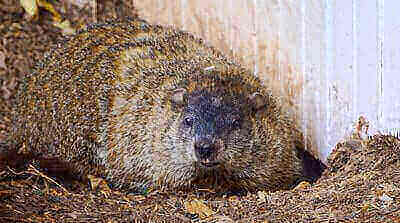Disclosure: We may earn commissions if you purchase products after clicking on a link from our site.
Do you want to hunt groundhogs? Do you know how to hunt groundhogs? Hunting groundhogs was popular decades ago but has died down in the last few decades thanks to the rise of hunting deer, turkeys, and ducks. With the increase in coyote and bobcat populations, it isn’t easy to locate groundhogs. In this article, we discuss how to hunt ground hogs.
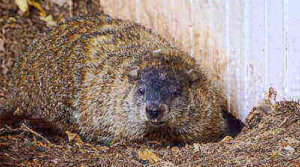
Table of Contents
How To Hunt Groundhogs
1. Man-Made Structures
Many years ago, it was easy to find groundhogs just about anywhere in the hay fields, open fields, along tree lines, in the woods, along the edges of fields of corn, or around the barn. But with the increase in bobcats and coyotes, you can’t find an underground burrow just anywhere. Today, your best chance of locating a groundhog burrow is under a man-made structure.
2. Scouting
Like most hunts, scouting for groundhogs will also help groundhog hunters be more successful. When you scout an area for groundhogs, look for underground burrows near man-made structures like barns and sheds. Old, broken barns and sheds, fencelines, hayfields, hills, and soybean fields are also prime areas for groundhog burrows. If you talk to a local farmer and he notices that their crops are missing or plants have been sharply cut at an angle, then you know that those are signs of the groundhogs.
Set up an early or late evening watch in areas like barns and sheds where they usually have a groundhog den. You will gather information about when they come out and where they go. This information will help you plan when and where to set up for a good shot.
3. Dawn & Dusk
Groundhogs usually leave their burrows during the first few hours of daylight and the last hours before it gets dark in search of food. When learning how to hunt groundhogs, the early morning and late evening are the best times to hunt groundhogs.
4. Food Sources
Groundhogs don’t travel more than 150 feet from their home for food. Therefore, when you find areas with things that they eat, just know that their burrows are not very far away. Groundhogs eat plants, vegetables, grubs, insects, snails, lettuce, alfalfa, clovers, dandelions, daisies, red mulberry, carrots, corn, peas, beans, celery apples, berries, cherries, grasshoppers, June bugs, bark, and twigs. When you are learning how to hunt groundhogs, look for areas with things that groundhogs eat.
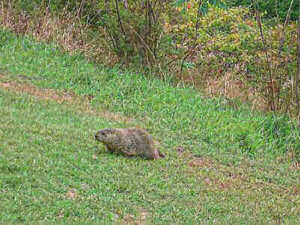
5. Nearby Farms
Look at maps or Google Earth for farms that may be the area you want to hunt. These farms will be attractions for groundhogs in search of food. Groundhogs are a farmer’s nightmare. Contact those farmers and get to know if they are experiencing problems with groundhogs. Offer to help by informing the local farmers you hunt groundhogs and would like to hunt them on their farms. You might just be permitted to hunt groundhogs in their feeding zones.
6. Inclement Weather
Groundhogs don’t come out when the weather is very cold or hot. They tend to remain in their burrows during these temperature extremes. This information should help you plan when to set up to target groundhogs. When it is an average temperature, it is the best time to set up near a burrow entrance in anticipation of groundhogs coming out.
7. Trail Cameras
You can also set up trail cameras to collect information on their movements and patterns. Woodchucks are highly patternable and after studying videos of groundhogs for some time, you will have a lot of information to help you target them. If you are interested in trail cameras, we reviewed the best trail cameras on the market today and you can read it from this link.
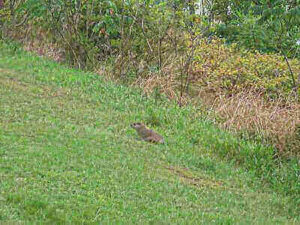
8. The Flour Trick
If while scouting you stumble across several burrows, you could sprinkle flour or powder around the groundhog holes and the immediate areas around those holes. After a day or two, the tracks left in the flour or powder will indicate which den entrances they are using and which direction they are going when they enter and exit the holes. This information also helps you determine which direction to set up to target the whistle pigs.
9. High-Quality Optics
After you scout areas for signs of groundhogs and determine that woodchucks are there for hunting, you can use rangefinders, hunting binoculars, or spotting scopes to target groundhogs from a distance and take a shot. We reviewed the best laser rangefinders, best hunting binoculars, and best spotting scopes that you can read from these links.
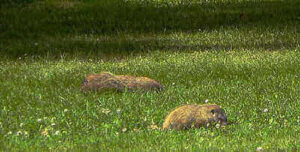
Groundhog Hunting Tips
1. Look for groundhogs in fields, along fencelines, hayfields, soybean fields, on high hills, and around barns and sheds.
2. Groundhogs leave their burrows during the first two to three hours of daylight and the last few hours leading up to dusk.
3. Groundhogs don’t travel more than 150 feet from their burrows for food.
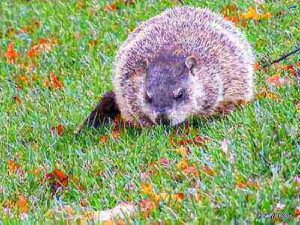
4. Groundhogs eat plants, vegetables, carrots, apples, berries, corn, alfalfa, insects, peas, beans, etc.
5. Groundhogs don’t come out of their burrows in inclement weather. They like average weather temperatures to venture out.
6. When you discover a number of burrows, sprinkle flour around the holes and come back the next day to gather information from them as to the burrows they are using.
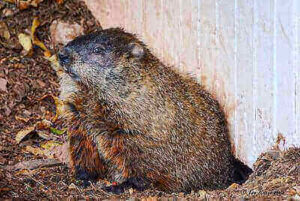
7. You can set up trail cameras to collect information on groundhog patterns.
8. Contact local farmers nearby and find out if they have problems with groundhogs destroying their crops. Offer to help by hunting the groundhogs on their farms.
9. Set up at a good elevation with a hunting binocular or spotting scope and search for whistle pigs.
10. Keep your eyes open for land-clearing piles of brush. Groundhog burrow entrances are usually beneath the stumps and brush piles.
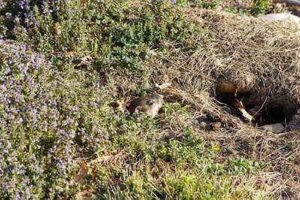
11. Look along the edges of rock walls at old and abandoned buildings.
12. Groundhogs climb apple trees to get apples and avoid predators. Look for apple orchards and keep your eyes on the apple trees.
13. The edges of corn, soybean, and wheat fields are prime areas for groundhogs.
14. If you come across burrows and don’t know if they are still being used by groundhogs, just observe if there are flies and gnats swarming around its opening. If there are flies and gnats, the burrow is in use, and keep watching it. Set up and wait for the groundhog to come out.
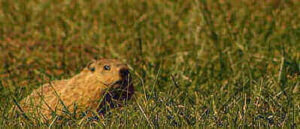
15. Use a rangefinder and shooting sticks as you will have to take shots for distances of more than 200 yards.
16. Groundhogs have a good sense of smell. Observe winds and position yourself downwind of the area where you suspect groundhogs are residing.
17. Woodchucks are most active on warm summer days. They can be found enjoying the warm weather on sunny days on the top of logs, boulders, and other flat and warm surfaces.
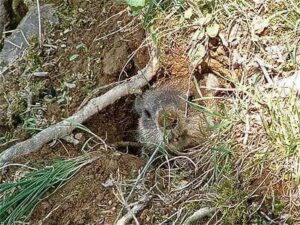
The Bottom Line
Groundhogs is considered the largest member of the squirrel family. They are nuisance animals, not only to farmers but also to homeowners. They were a popular target for deer hunters many years ago, but today are not one of the targets of hunters.
Groundhog hunting involves a lot of long shots from long-range shooting with a flat-shooting rifle, but with good scouting, planning, and preparation, you can be successful in hunting groundhogs. In this article, we discuss how to hunt groundhogs.
You can also read how to hunt beavers, how to hunt raccoons, how to hunt javelinas, how to hunt hogs, and how to hunt cottontail rabbits if you are also interested in hunting these animals.
